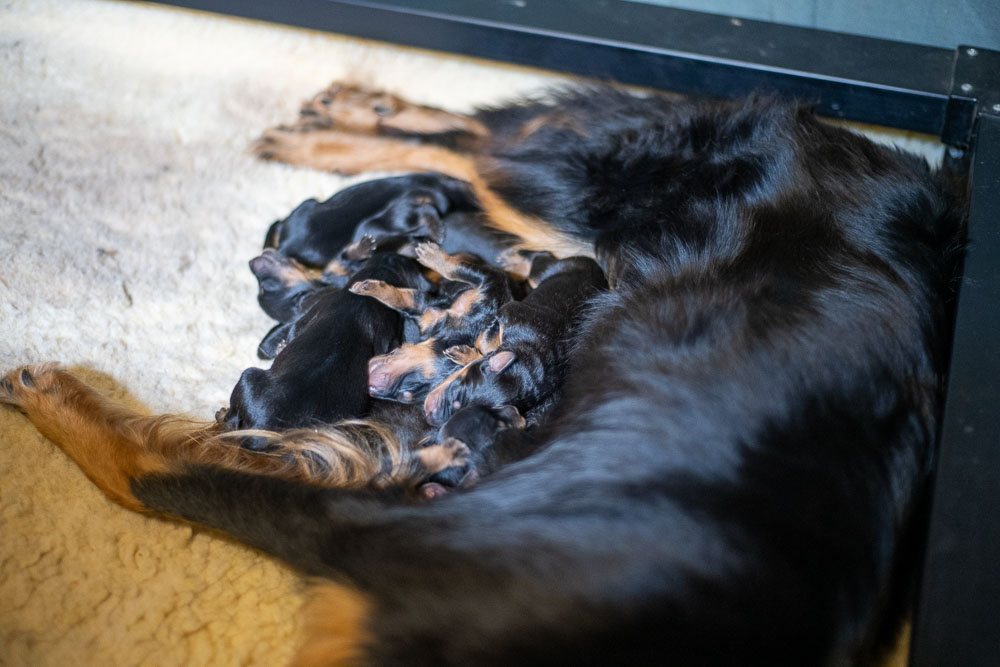For the first two weeks of life, a canine neonate is unable to see, hear or thermoregulate. Primarily, the entire neonatal period is devoted to one function; obtaining nutrition by nursing. A normal mother will provide optimal care for her puppies, and attention should be concentrated on making sure that the dam is well nourished and allowed to care for her puppies undisturbed. The most that the owner needs to do is to inspect the puppies once a day for possible illness or accidents. This inspection may lead to secondary benefits. Although we have no direct evidence, experiments with other species (Levine, 1962; Denenberg, 1962) strongly indicate that young animals benefit from the stimulation of handling.
Breeder’s Notes
During this period, the puppy grows in size and strength but retains the same patterns of behavior it was born with. Because puppies in the neonatal phase are completely dependent on their mother, if an emergency arises, the neonatal puppy is difficult to feed by hand. It can be fed with a few drops at a time from an eyedropper, all the while making futile sucking movements. Fortunately, at 2 weeks old, the puppy becomes more adaptable. It will nurse from a bottle and can even (clumsily) lap milk or soft food from a dish.
References
- Scott, J.P., and John L. Fuller. 1974. Genetics and the Social Behaviour of the Dog. A Phoenix Book, P570. University of Chicago Press. http://esbt.us/2y.
- Ha, J.C., and T.L. Campion. 2018. Dog Behavior: Modern Science and Our Canine Companions. Elsevier Science. http://esbt.us/2z.
Return to the CHEW Protocol main page

This work (A Canine Health Enrichment and Whelping Protocol, by the Old-fashioned Black & Tan English Shepherd Association) is free of known copyright restrictions.

